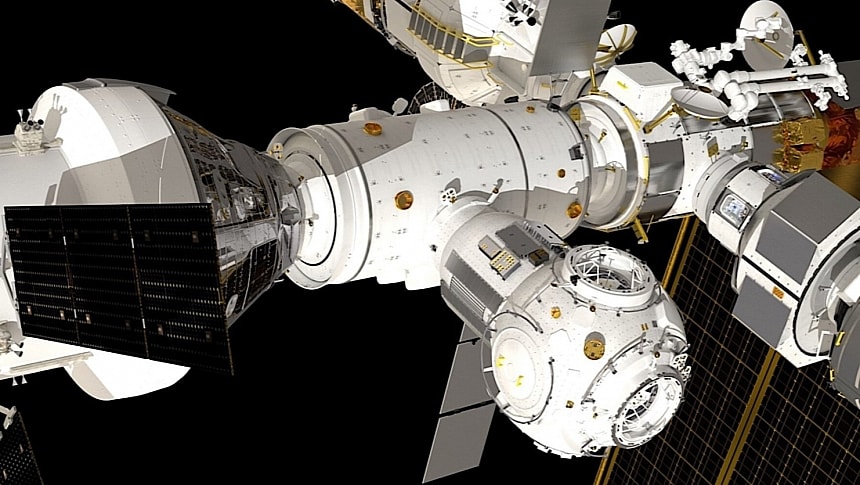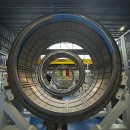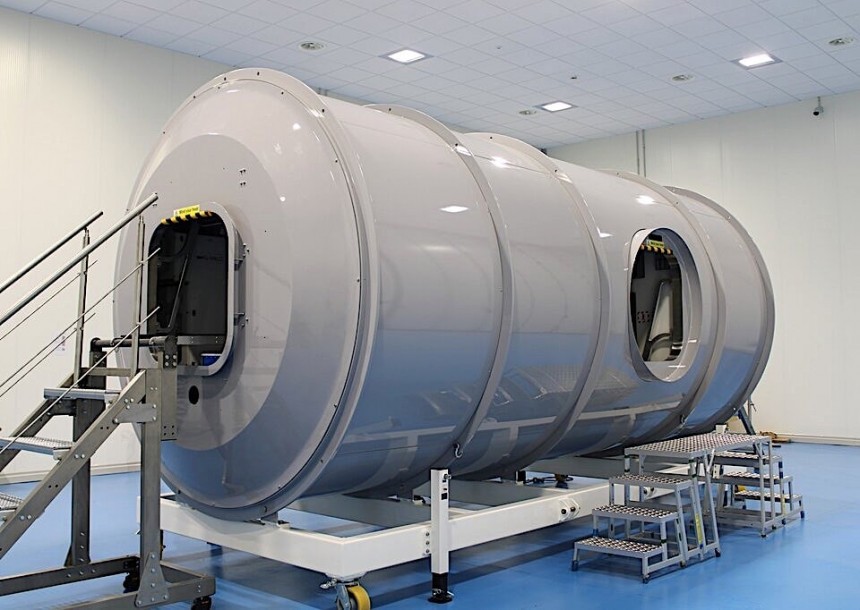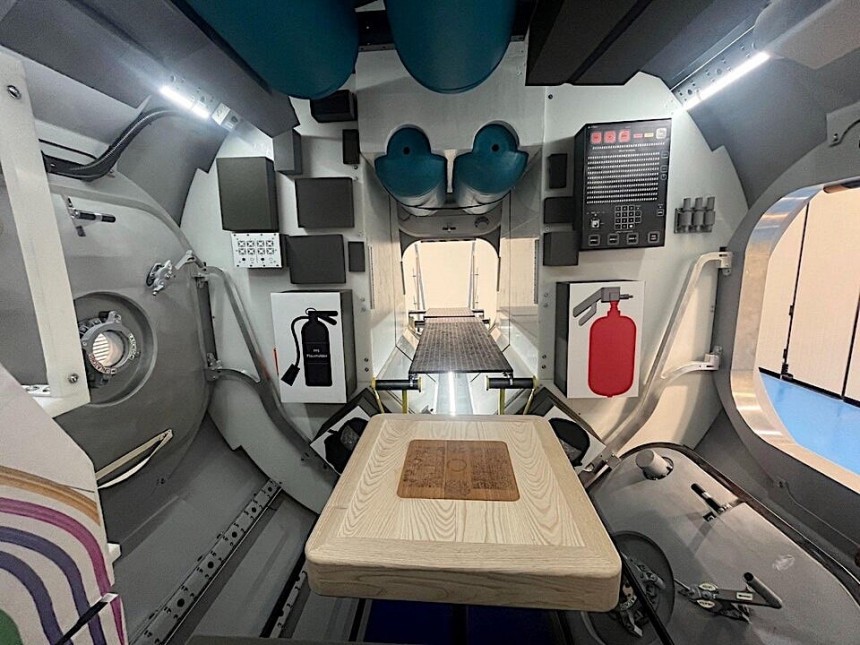What seemed more or less like a distant dream a few years ago has now entered the realm of our reality: humans really are about to build a crew-capable space station around the Moon, the first ever such structure deployed in orbit around a celestial object other than Earth.
The space station is called Gateway, and it is being put together by the world's most powerful space agencies (American NASA, European ESA, Japanese JAXA, and Canadian CSA), backed in their efforts by a long list of private companies, including SpaceX, Maxar, and Northrop Grumman.
Gateway is a mammoth undertaking, but one that when complete may very mark the pinnacle of our species' space exploration efforts. It will spin in orbit around the Moon, supporting the Artemis missions to the surface, and could eventually become a staging point for missions to our neighbor Mars.
We've talked about the station before here on autoevolution, so you may be aware of what it is all about. Here's a quick reminder, though, to get you ready for the real reason we're here to talk about the Gateway once more.
The lunar orbit human HQ will be assembled from three main elements, namely the Power and Propulsion Element (PPE), the Habitation and Logistics Outpost (HALO), and the Lunar International Habitat (Lunar I-Hab). They will have docking ports to allow spaceships the likes of the Orion, but also SpaceX hardware, to visit the station and load or unload crew and cargo.
When it will be ready for operation, the Gateway will be capable of accommodating a crew of up to four people. That's fewer than what the International Space Station (ISS) in orbit of our homeworld is capable of holding - which in normal circumstances would be seven people, but there were instances when that number grew for brief periods of time to 13.
The astronauts who will be orbiting the Moon will go about their business of their mission inside something called the Lunar International Habitat. As the name says, we're basically talking about the place where the crew will live and work.
The thing is designed to provide 353 cubic feet (ten cubic meters) of space, which is about the same amount as you'd get in a medium-sized camper van. It's also the main entry point to the Gateway, and it will be fitted with everything it requires to allow astronauts to survive there for up to 90 days.
The European Space Agency is tasked with building the Lunar I-Hab, and last week the Europeans gave us the first major update on how work on the module (or at least on a test version of it that will go into space) is progressing.
The Thales Alenia Space facility in Turin, Italy, is where ESA has begun building the I-Hab to be sent into space for testing purposes, and the same place is where a full-scale replica of the module has already been put together and is ready for human-in-the-loop testing.
The mock-up is the work of a company called Liquifer Space Systems, a crew that specializes in creating replicas of space-faring pieces of hardware. It's main reason for being is to allow engineers to "fine-tune the design of the interior of Lunar I-Hab to ensure future astronauts can make their way around the module effectively and safely."
For the tests that lie ahead, ESA will use real astronauts who have been to space on both NASA and ESA missions. These people will be tasked with identifying potential problems with the interior design of the module, discovering unforeseen hazards, and making sure that everything is within reach. The only tests conducted so far were with simulated humans.
But if the astronauts are real, pretty much everything else about the mock-up module is not. ESA calls the design low-fidelity, and what that means is that the equipment fitted inside is only there for show, as it only mimics the shape of the real gear and is not functional in any way.
ESA plans to fit the test module with more real-life-like gear as it moves deeper and deeper into the testing program, all the way to functional crew interfaces, more specifically the ones that will put through their paces the connections with hardware that the Japanese space agency will supply.
ESA's Lunar I-Hab is scheduled to launch to its designated point in orbit with the Artemis IV mission, currently expected to take off sometime in 2028. It will meet up there with the PPE and HALO modules that would have already been delivered by a Falcon Heavy rocket in 2025.
The first crew to use the Gateway space station for their dealings will be that of the Artemis IV mission. They will be tasked with bringing the station fully online and preparing the rest of the hardware for the first-ever Moon surface mission conducted from this space camper van.
Gateway is a mammoth undertaking, but one that when complete may very mark the pinnacle of our species' space exploration efforts. It will spin in orbit around the Moon, supporting the Artemis missions to the surface, and could eventually become a staging point for missions to our neighbor Mars.
We've talked about the station before here on autoevolution, so you may be aware of what it is all about. Here's a quick reminder, though, to get you ready for the real reason we're here to talk about the Gateway once more.
The lunar orbit human HQ will be assembled from three main elements, namely the Power and Propulsion Element (PPE), the Habitation and Logistics Outpost (HALO), and the Lunar International Habitat (Lunar I-Hab). They will have docking ports to allow spaceships the likes of the Orion, but also SpaceX hardware, to visit the station and load or unload crew and cargo.
When it will be ready for operation, the Gateway will be capable of accommodating a crew of up to four people. That's fewer than what the International Space Station (ISS) in orbit of our homeworld is capable of holding - which in normal circumstances would be seven people, but there were instances when that number grew for brief periods of time to 13.
The thing is designed to provide 353 cubic feet (ten cubic meters) of space, which is about the same amount as you'd get in a medium-sized camper van. It's also the main entry point to the Gateway, and it will be fitted with everything it requires to allow astronauts to survive there for up to 90 days.
The European Space Agency is tasked with building the Lunar I-Hab, and last week the Europeans gave us the first major update on how work on the module (or at least on a test version of it that will go into space) is progressing.
The Thales Alenia Space facility in Turin, Italy, is where ESA has begun building the I-Hab to be sent into space for testing purposes, and the same place is where a full-scale replica of the module has already been put together and is ready for human-in-the-loop testing.
The mock-up is the work of a company called Liquifer Space Systems, a crew that specializes in creating replicas of space-faring pieces of hardware. It's main reason for being is to allow engineers to "fine-tune the design of the interior of Lunar I-Hab to ensure future astronauts can make their way around the module effectively and safely."
For the tests that lie ahead, ESA will use real astronauts who have been to space on both NASA and ESA missions. These people will be tasked with identifying potential problems with the interior design of the module, discovering unforeseen hazards, and making sure that everything is within reach. The only tests conducted so far were with simulated humans.
ESA plans to fit the test module with more real-life-like gear as it moves deeper and deeper into the testing program, all the way to functional crew interfaces, more specifically the ones that will put through their paces the connections with hardware that the Japanese space agency will supply.
ESA's Lunar I-Hab is scheduled to launch to its designated point in orbit with the Artemis IV mission, currently expected to take off sometime in 2028. It will meet up there with the PPE and HALO modules that would have already been delivered by a Falcon Heavy rocket in 2025.
The first crew to use the Gateway space station for their dealings will be that of the Artemis IV mission. They will be tasked with bringing the station fully online and preparing the rest of the hardware for the first-ever Moon surface mission conducted from this space camper van.









